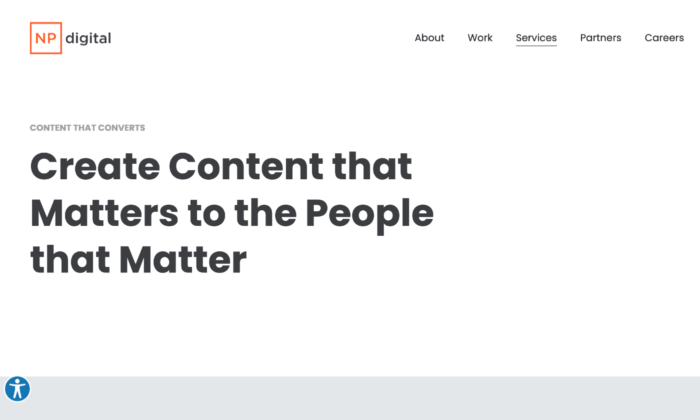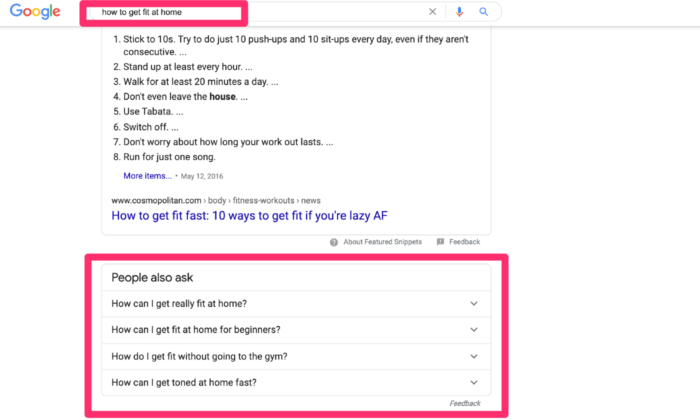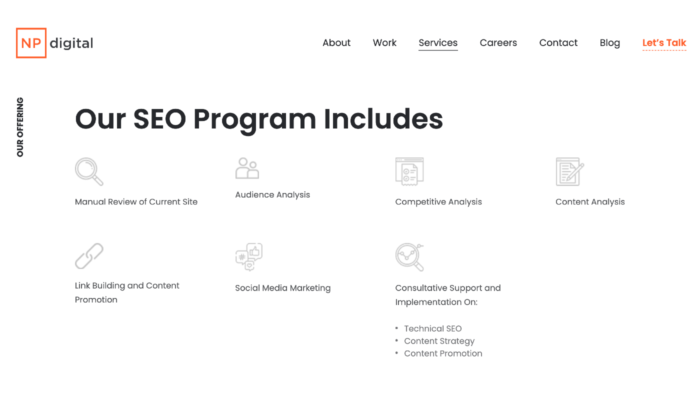
There are two kinds of people.
The first group go out of their way in search of what they need.
Did you find this article after doing some research?
If so, you belong in the first group.
The second group waits on others to suggest what they should want.
Was this content piece forced on a feed you were scrolling via some form of paid advertising?
Yes?
Then you belong in the second group.
Either way, whether this article was forced on you (outbound) or you researched and found it yourself (inbound), the point is that you’re still here.
So what does that tell you?
It means that the difference between outbound marketing and inbound marketing boils down to getting your business in front of two different groups of people.
That is, those who go out of their way to find your product or service when they need it. Or, those who you must go out of your way to bring your business to their attention.
I’m not here to discuss ethical issues or tell you how inbound marketing is better than outbound marketing.
The truth of the matter is that both approaches, be it outbound or inbound marketing, works.
So what’s my goal with this article, you ask?
I’ll show you how they differ from each other and when to use one approach over another to achieve what I believe is most paramount – reach the right audience and grow your business.
Good?
Let’s start with the basics… their definitions.
What is outbound marketing?
Outbound marketing, also known as “push” or “interruption” marketing, is the use of marketing tactics to get your business (or its message) in front of people not necessarily searching for it.
Traditional outbound channels like TV, radio, print, radio, and billboards are there for all to see.
In this digital era, brands and marketers still use the outbound marketing approach to reach a wide audience of people via paid ads tactics.
Whether traditional or digital channels, the goal with outbound marketing is the same.
Marketers use it with the hope that a fraction of the broad audience they’re targeting would take interest in their offer or message and start the journey to becoming a customer.
But there’s a reason why the outbound marketing approach, especially those executed via display ads, gets a terrible click-through-rate of 0.06% on desktop and 0.16% on mobile.
Nobody asks for them.
Going by that negligible display ads’ CTR, most people seem to have thrown outbound marketing out of the window.
No reasonable person throws a baby out with the bathwater, so you shouldn’t.
Why?
With tailored outbound tactics like cold email outreach, marketers see open rates of about 17.8% and CTRs of up to 14%. And on LinkedIn, cold messages get 3x that, according to LinkedIn’s report.
In other words, outbound marketing still works.
The absence of a marketing strategy to determine when and how to use it, as well as to guide its execution is why most marketers and businesses fail with outbound marketing.
What is inbound marketing?
Inbound marketing prides itself as the most reasonable and ethical way to advertise a business. This approach has been in existence since 2006, about 15 years ago.
So why are people still listening even more today?
It’s because inbound marketing is a subtle, not-so-salesy way of attracting prospects; then, engaging them with relevant, helpful information until they become customers and advocates.
Remember the first group of people I mentioned, those who go out to find what they need?
Inbound marketers typically wait for this bunch with the right information in the form of content marketing, SEO, and social media to attract and pull them into their sales funnels.
Inbound marketing may be non-promotional and not “forced” on people like outbound.
But that’s not to say it’s easy or a stroll in the park when using it to attract prospects actively searching for the products or services your business offers.
Like outbound, without a solid strategy to guide its execution, inbound marketing is difficult to turn into a growth channel.
Why?
Because it takes time, upfront investment, and excellent content creation and promotional expertise to ensure your content gets found by prospects.
At my ad agency, Neil Patel Digital, here’s how we call this act of strategizing to create content that gets found:

From experience, I can say that the success or failure of outbound or inbound marketing hinges on this one thing: Creating content that matters for the people that matter.
Why?
Because when you create content that prospects really need, they’ll love to see it whether you force it on them (outbound) or they go out in search of it (inbound).
Hence, to grow your business depends on whether you have a great strategy to guide you on when to use one approach over the other.
I’ll talk about when to use outbound or inbound marketing.
Before that, let’s examine their differences.
3 Key differences between inbound and outbound marketing
The ultimate goal of inbound or outbound marketing is to reach prospects and get them to do business with you.
Although the end goal is the same, these are the three core areas they differ.
Difference #1: Pull vs push
If you create helpful content that gets discovered by your ideal customers when they’re searching for it, you’ve successfully pulled them into discovering your business as they consume that content piece.
Now, that is inbound marketing in practice.
This approach demands that you create content to address topics or queries prospects are already searching for, which you can find via keywords research or community forums.
Outbound marketing is the opposite of that.
Here, you develop content with the assumption (sometimes based on trends) that it’ll capture your prospects’ interest. But since they aren’t searching for it or asked for it, you have to push it via advertising it to them.
It’s like taking a blind shot.
Maybe, just maybe your shot hits the target, reaching some people who’ll take interest in your “pushed” ad, discovering your business or message in the process.
Difference #2: Generic vs specific
Outbound marketing campaigns via mediums like TV, radio, billboards, and print ads tend to be more generic.
Why?
Because like you, just about anybody can watch a TV show or pass a street corner with a mounted billboard.
So to increase the chances of reaching a substantial fraction of people who may be interested in an ad, outbound campaigns tend to be more generic or try to appeal to the entire public.
For example, this ad by Ogilvy, although very creative, speaks to just about anyone that has teeth:

On the other hand, inbound marketing follows a more specific approach.
Inbound’s core principle involves creating educational or entertaining content pieces to address a problem faced by a specific audience.
In this case, even though everyone may have the problem, a company only concerns itself with an audience it is interested in or has experience serving.
The result of this is the creation of content such as blogs, social media posts, newsletters, or the use of SEO techniques to optimize for targeted queries aimed at a defined audience.
For example, see below how WebMD titled this content piece specific to fitness enthusiasts, looking to get fit at home:

This content may not appeal to the millions of people interested in fitness as an outbound approach would aim to.
But by creating content specific to people who want to get fit at home, WebMD still manages to drive about 4,000 visits to this content piece per month.
Difference #3: Permissive vs interruptive
People use the search engines to find answers to their questions or solutions to their problems.
And each time your ideal customer does this, they’re simultaneously giving the search engine the permission to show them the most relevant answers to their queries.
Hence, this permission extends to you if you’ve created a search-engine-optimized content piece the search engine finds worthy enough to show among its search results.
On social media, prospects follow people and companies they trust.
Doing this gives those people and companies the permission to create content that shows up on their feeds.
This same pattern plays out with email newsletters.
When someone signs up for your newsletter, they’ve given you the permission to send them personalized emails.
The inbound methodology is how you create and distribute content prospects permit via their actions on search engines, social media, or email opt-ins.
This makes inbound a permissive marketing approach.
Outbound marketing, on the other hand, takes an interruptive approach.
When listening to a radio program or watching your favorite TV documentary, do you ever pause and ask them to throw in an ad?
I don’t. You don’t. And nobody does.
But that’s exactly what you get – regular interruption of the show with advertising.
In this digital era, marketers still use this outbound approach of interrupting people to capture their attention online.
For example, when I scroll my social media feeds, or watch videos on YouTube, I get regular interruptions with advertising I didn’t ask for.
Most times, I skip past them.
Other times, an ad captures my attention, and I click through to learn more.
Again, that should remind you of what I said earlier.
When executed with the right strategy, both inbound marketing and outbound works.
With that, let’s see when it’s preferable to use one approach over another.
When to use outbound marketing
Have you ever clicked on a random ad while scrolling Facebook, LinkedIn, watching a YouTube video, or in the promotions tab of your Gmail account?
Good.
What about when outbound advertising campaigns come up during a TV/radio show, in print, or on a billboard, have you ever proceeded to research the brand behind the ad on Google?
I have done both at different times.
And in those cases, I wasn’t really aware of the companies or brands behind those ads until I discovered them via their outbound campaign and took interest.
Through those outbound campaigns, I became aware of those brands – something not possible if they waited for me to come search for them.
Hence, if you’re a new business or you just launched a new product and need to build awareness, it makes sense to use outbound marketing like TV, billboards, and others.
The use of outbound marketing doesn’t end in traditional marketing tactics. It extends to the online space, and there’s a reason for that.
Inbound marketing takes time.
Time to build a substantial following on social media.
Time to grow an email list.
And if you’re trying to rank your content on Google, expect to wait at least 100 days, despite massive upfront investments.
But with the help of an experienced marketing agency, you can intercept prospects even if they aren’t searching for you with digital outbound ads that resonate with their needs.
Doing this can bring immediate results instead of waiting so long for your content to rank through the inbound approach.
How can you do it, you ask?
By delving deep into analytics to identify your prospects’ interests based on their online behaviors and data touchpoints. And developing a proactive outbound marketing strategy that resonates with research-identified target audiences.
When to use inbound marketing
Both outbound and inbound marketing require upfront investments.
As I’ve shown you, outbound marketing, when executed with an excellent strategy, can drive results faster in the short-term than inbound marketing.
But outbound is a pay to play activity.
So immediately you stop fueling your outbound campaigns with cash, everything falls off the cliff.
For example, if you’re running an outbound PPC campaign for a target keyword, the moment you stop bidding, you won’t even make Google Ads’ auction.
These days, inbound marketing won’t bring you immediate results even if you’re in a niche that is less competitive.
And that’s because it takes time for the search engine to index, understand, and rank your content.
In the long-term, however, inbound marketing is 62% less expensive compared to outbound tactics. Once inbound sets into motion, you can drive evergreen organic traffic, pulling visitors, leads, and customers.
So inbound marketing is a preferred approach if you’re in business for the long-term and ready to be patient while you invest in consistent content creation.
However, nowadays, you can’t just create content here and there, fold your hand, and expect magic to happen.
To even stand a chance in the long-term with inbound marketing, you need a clearly-defined strategy.
This strategy must cover everything from audience research, competitive analysis, exceptional blog and social media content creation, promotion, link building, and technical stuff.
Building your business with inbound marketing isn’t a stroll in the park and cannot be left to chance.
You need a battle-tested program to develop a strategy that works:

Conclusion: Outbound vs Inbound marketing, which is better?
I don’t agree that one is better than the other.
It all depends what’s best for a particular situation and on the strategy developed to execute each.
Why do I say so, you ask?
Because when you look at the sales funnel in relation to the steps inbound and outbound marketing takes to convert prospects into customers, they have similar structure.
So, instead of looking for which one is better than the other, it’s better to combine both.
Use outbound marketing to build awareness, reach prospects not necessarily searching for you (but may need your product/service, as identified from research) to get short-term results.
At the same time, activate your inbound marketing engines in preparation for the long-term, as you allow the algorithms to index, understand, and rank your content.
Again, it all boils down to having a great strategy.
And if you need help developing a one that combines outbound and inbound marketing to reach the right audience and drive business growth…
Don’t hesitate to get in touch with my ad agency, NP Digital.
The post Inbound Marketing Vs. Outbound Marketing appeared first on Neil Patel.
No comments:
Post a Comment